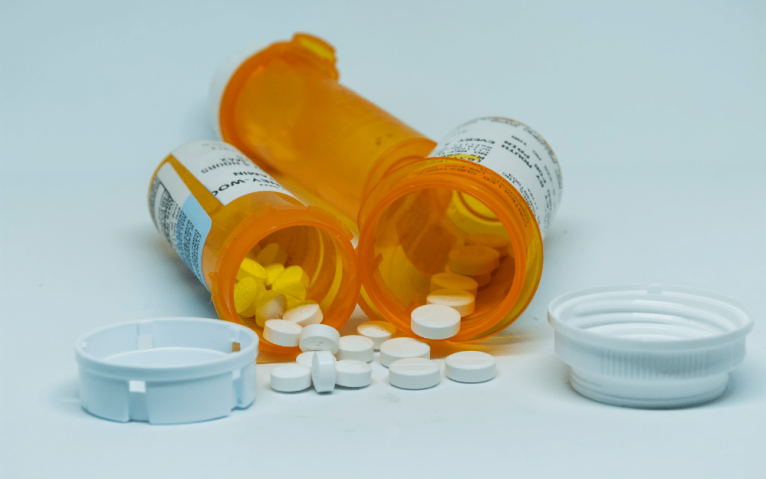Both hydrocodone and oxycodone are powerful prescription painkillers. Used to treat moderate short- and long-term chronic pain stemming from conditions like cancer, surgery, and arthritis, these semi-synthetic opioids are a popular choice among doctors. However, both are highly addictive and can lead to a path of addiction. Let’s explore the differences between hydrocodone and oxycodone to better understand how they work.
What They Are
In essence, both medications are similar in chemical form and function. Both are usually prescribed together or on their own. Usually, oxycodone is paired with other pain relievers like acetaminophen. Hydrocodone is mostly prescribed to treat moderate to severe pain from a chronic cough. Thus it’s often paired with cough medications.
Hydrocodone comes in brand names like Vicodin, Norco, Lortab, and Maxidone. While oxycodone is available in brands like Oxycontin. Percocet, Percolone, and Oxyfast. Most people are more familiar with the dangers and side effects of these brand names.
Hydrocodone vs. Oxycodone
Studies proved there’s little to no difference in which one is more powerful for pain management in terms of effectiveness. Yet, most studies show similar results, even when combining each drug with other medications. However, based on chemical composition, hydrocodone may be less potent than oxycodone.
But as far as dosage, they have more differences. Although both pain medications are available in extended-release presentations, they differ in dosage. For example, someone taking oxycodone will do so every 12 hours, while hydrocodone they’ll take once daily.
Overall, whether it is to treat short-term pain or long-term pain, most experts believe that these should be emergency medicine choices when it comes to pain relief. As always, it’s best to seek medical advice for alternatives that carry less risk of addiction.
Side Effects of Hydrocodone and Oxycodone
Even when taken as instructed, both prescription drugs can cause potential side effects that range from mild to severe. Research shows that an oxycodone-acetaminophen combination is more likely than hydrocodone-acetaminophen varieties to produce nausea and dizziness, and other severe side effects.
Common side effects may include:
- Mood changes
- Drowsiness
- Dry mouth
- Headaches
- Insomnia
- Stomach pain
Serious side effects may include:
- Chest pain or tightness
- Dizziness
- Low blood pressure
- Irregular breathing or respiratory depression
- Nausea and vomiting
- Seizures
- Weakness
Dangers of Addiction
Opioid drugs such as hydrocodone and oxycodone have a very high potential for abuse. Even when following instructions, long-term use of opioids may lead to dependency. This effect causes someone to take increasing amounts of medication to achieve the same result. Unfortunately, tolerance increases the risk of substance abuse.
Eventually, prolonged chronic use of these drugs can alter brain structures. Once this happens, they’re more likely to experience opioid withdrawal symptoms whenever they try to stop using the medicine. Overall, common symptoms of withdrawal include:
- Anxiety
- Fever
- Insomnia
- Muscle aches
- Nausea
- Flu-like symptoms
While these symptoms aren’t life-threatening, they do lead to overdose. Because withdrawal symptoms are so uncomfortable, it’s common for people to take high doses at once instead of following the instructions, which increases the likelihood of a fatal overdose. Some of the signs of hydrocodone and oxycodone overdose include:
- Clammy skin
- Weak muscles
- Loss of consciousness
- Difficulty breathing
- Excessive sleepiness
- Sudden death
Treatment for Opioid Abuse
It can be dangerous to attempt to detoxify from hydrocodone and oxycodone alone. Because withdrawal symptoms can be uncomfortable and increase the likelihood of overdose, most experts recommend attending a medically-supervised detox facility and follow up with a rehabilitation program. At Lighthouse Recovery Institute, our addiction recovery programs include:
Inpatient Programs: These offer a temptation-free environment that’s designed to help people in recovery. In this case, people check into a living drug rehab facility, and they attend meetings and therapy sessions while remaining in a supervised environment.
Outpatient Programs: For those with a mild addiction, an outpatient rehab program might be an option. In this case, they have a more flexible program that allows them to maintain their daily schedule and responsibilities like attending school, work, or caring for their family.
Medication-Assisted Treatment: While rare, long-time addicts might experience worse withdrawal symptoms. To prevent these symptoms from harming them physically and psychologically, a physician might recommend specific prescription medications to help through the withdrawal process under a medically supervised program.
Aftercare Programs: Addiction isn’t one thing people can shove under the rug. The remnants of addiction often stay with them for the rest of their life. To help users find happiness and purpose in their lives, aftercare programs offer relapse prevention classes, life skills, and other essential tools for a successful life after treatment.
Finding Help Near Me
If you or someone you love is struggling with substance use disorders, ask for help immediately. Call Lighthouse Recovery Institute today and speak with our addiction specialists to learn more about our comprehensive and personalized addiction treatment programs.
Our addiction center offers unique and personalized treatment plans because we believe no two addictions are alike. The journey towards recovery is a long one, but together and with your family and friends’ support, we’ll make it.









